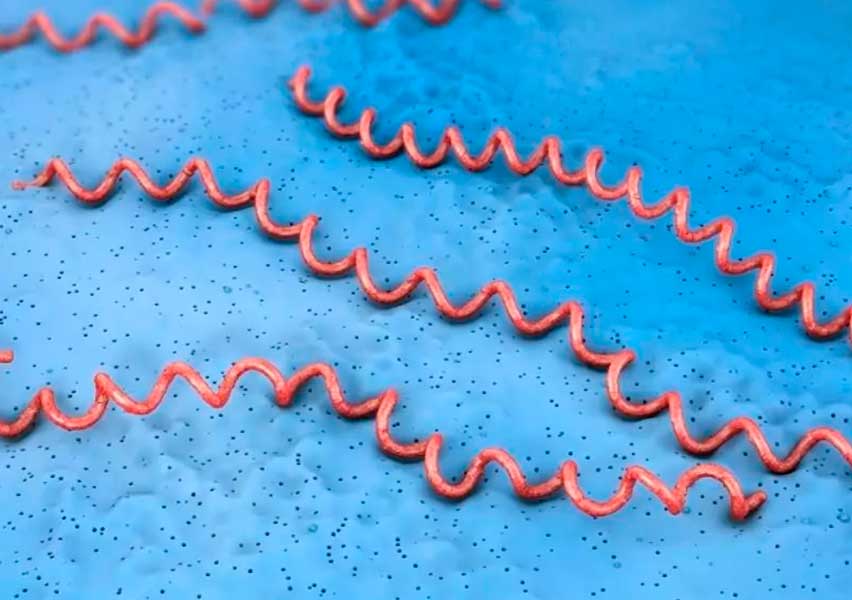Borrelia
Bacteria of the genus Borrelia are highly motile spirochetes with a Gram-negative bacterial type cell wall, that grow under microaerophilic or anaerobic conditions. Borrelia burgdorferisensu lato is the causal agent of Lyme disease and includes three human-pathogenic species: B. burgdorferi sensu stricto, B. afzelii and B. garinii. The three species are present in Europe, while only the former is found in North America.
Clinical characteristics: Lyme disease spirochetes are transmitted by ticks of the genusIxodes. An expanding erythematous skin leson, erythema migrans, develops at the site of the tick bite 7 to 9 days following tick engorgement in about 80% of patients. Weeks to months later, some patiens develop abnormalities of the nervous system, heart and joints.
Diagnosis: Since the hallmark of the disease, erythema migrans, may be absent or atypical in appearance, and signs and symptoms of disease may be nonspecific, laboratory tests can play an important role in assisting or confirming the diagnosis of Lyme disease. Serology is the most useful laboratory test that is readily available as an adjunct to the clinical diagnosis of Lyme disease. Serology results must be used in combination with clinical history, patient presentation and an understanding of the antibody response in Lyme desease. IgM and IgG antibody responses occur in early Lyme disease. Patients who are reinfected may have only an IgG response.
Treatment: Most patients can be cured with a few weeks of oral antibiotics (usually between 14 and 30 days). Patients with certain neurological or cardiac forms of illness may require intravenous treatment.

